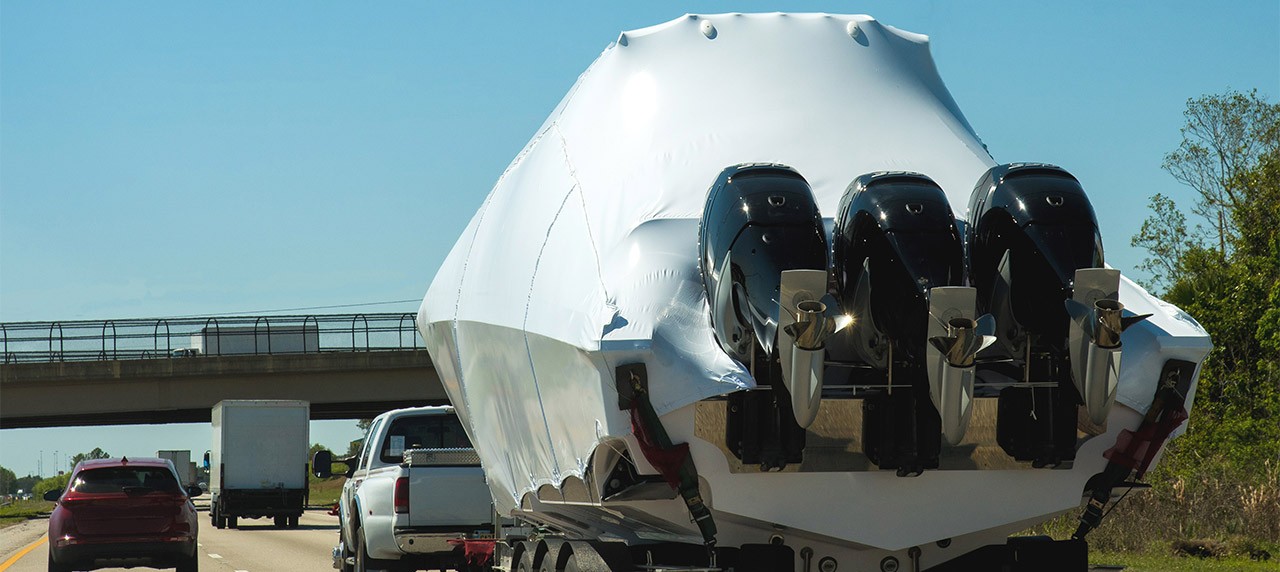
Everyone who has to ship a boat, whether a vast luxury yacht or a small recreational vessel, must comprehensively understand the necessary steps, preparation, and shipping strategies. This comprehensive manual will provide the knowledge and skills to ship a boat internationally.
When is Yacht Delivery Required?
There are various scenarios when yacht delivery becomes necessary. Some everyday situations include:
- Purchasing a yacht from a foreign country and needing it delivered to your preferred location.
- Participating in international shows or racing events.
- Relocating to a new destination.
- Sending your yacht for repairs or maintenance in another country.
- Selling your yacht to a buyer in a different country.
- In cases of unexpected captain departure.
- Relocation of yachts owned by individuals with limited experience.
Professional yacht delivery services ensure a hassle-free and secure transportation process in these cases.
Priming Your Yacht For Overseas Shipping

Proper preparation is essential to ensure the safety of your yacht or boat during international shipping or moving any oversized cargo. Follow these steps to prepare your vessel.
Documentation and Registration
Ensure all necessary documentation, including ownership papers, registration, and insurance, is in order. Verify that your vessel complies with international regulations and has the necessary permits for transportation.
Maintenance and Inspection
Inspect your yacht or boat thoroughly, checking for mechanical issues or damages before you ship it overseas. Conduct routine maintenance and ensure that all systems are in proper working order.
Secure Loose Items
Remove all your items including any loose objects and non-essential equipment. Secure any remaining items properly to prevent damage during transit.
Fuel and Fluids
Ensure your vessel has minimal fuel and fluids on board to comply with safety regulations. Consult with your shipping provider for specific requirements regarding fuel levels.
Properly Winterize (if applicable)
If you are shipping during the winter season or to a colder climate, take the necessary steps to winterize the vessel. This action protects the water systems, engines, and other components from freezing temperatures.
Proper preparation is crucial to safeguard your yacht or boat and ensure a seamless shipping experience.
Ensuring Your Boat's Safety
Your vessel will be open to various environmental conditions and potential risks during international shipping. Protecting your vessel is essential to prevent damage. Consider the following measures:
Professional Packing and Crating
Engage in professional packing and crating services to ensure secure transportation. Expert packers will use high-quality materials to protect the vessel from impacts, vibrations, and moisture.
Shrink-Wrapping
Shrink-wrapping provides an additional layer of protection. This tight, weather-resistant covering shields the vessel from rain, saltwater, and UV rays.
Secure Transportation Equipment
Verify that the shipping company uses specialized transportation equipment, such as cranes, lifts, and trailers. These ensure safe handling and secure handling operations.
Insurance Coverage
Obtain comprehensive insurance coverage during transportation. This step provides financial protection in case of any unforeseen incidents or damages. By implementing these protective measures, you can minimize the risk of damage to your yacht or boat and ensure its safe arrival at the destination.
Yacht Shipping Methods
There are several methods available for shipping yachts and boats internationally. The choice of method depends on factors such as the size of the vessel, its configuration, and the specific requirements of the shipping route. Here are the main yacht shipping methods.
Shipping with Containers
The vessel must be loaded into a shipping container. It’s a safe and sound transport, particularly for boats of modest size.
Roll-on/roll-off
Yachts may be efficiently transported via Ro-Ro transportation. It is a way to carry a ship from one port to another. It is moved and dragged onto a Ro-Ro vessel via special ramps, where it is safely attached and then carried.
Shipping using Lift-On/Lift-Off
Lo-Lo method uses cranes and other forms of special uploading equipment when transporting yachts and boats. The largest boats that may benefit from this are those that are unsuitable for Ro-Ro or freight container transport. Sometimes owners resort to this strategy for manually handling their cargo.
Shipping from Port to Port
From loading at the originating port to unloading at the destination port, berth-to-berth shipping covers everything. Logistics are all taken care of, including loading, securing, transporting, unloading, importing, exporting, and dispatching.
The choice of shipping method depends on factors such as the size and type, budget considerations, and the specific requirements of the shipping route.
Evaluating The Cost Of Boat Shipping
The cost of global shipping a boat varies depending on several factors, including:
- Size and dimensions.
- Chosen shipping method.
- Distance between origin and destination ports.
- Customization and special handling requirements.
- Insurance coverage.
Requesting a free boat shipping quote from a reputable yacht shipping service provider is necessary to get an accurate estimate based on your specific requirements. They will consider the details and the shipping route to provide you with a comprehensive cost breakdown.
How to Import Boat in The U.S.

Before importing a boat, ensure you have all the necessary documentation. This includes:
- Proof of ownership. Bill of sale, registration certificate or builder’s certificate
- Registration. Registration from the country of origin, if applicable
- Import permits. Obtain any necessary permits specific to your boat and its origin
- Safety & Emissions Certificate. Ensure compliance with US Coast Guard and Environmental Protection Agency (EPA) standards
- Marine insurance. Secure proper insurance coverage for the voyage and beyond
General Requirements
- Age. Boats at least 25 years old can be imported without restrictions. Younger ones need to comply with EPA and, if no trailer, DOt regulations
- Hull Identification Number (HIN). The vessel must have a valid HIN meeting US Coast Guard standards
- Safety standards. It must comply with US Coast Guard safety regulations, which might differ from your origin country
- Environmental compliance. Vessels with gasoline engines require an EPA Form 3520-1 certifying adherence to emission standards.
Agencies Involved
- U.S. Customs and Border Protection (CBP). File a formal entry (CBP Form 1300) for imports, pay duties and taxes, and declare any foreign merchandise onboard
- Environmental Protection Agency (EPA). Ensure emissions compliance (EPA Form 3520-1) as we mentioned before
- U.S. Coast Guard (USCG). File a Notice of Arrival and comply with safety regulations based on the size and type
- Department of Transportation (DOT). If importing a boat on a trailer, ensure it meets DOT regulations for registration and road use
Additional Information
- Boats and yachts 30 feet or longer without a cruising license require an annual decal user fee
- Certain restrictions exist for importing wooden boats based on the type of wood used
- Consulting a customs broker can simplify the process and ensure everything is done correctly
Remember, these are general guidelines, and specific regulations might apply depending on the boat’s characteristics, origin country, and intended use. For thorough and up-to-date information, it’s best to directly contact the Atlantic Project Cargo.
By meticulously following these steps and remaining organized with your documentation, you can navigate the import process with confidence and soon enjoy the thrill of your boat gliding across American waters. Remember, professional assistance from customs brokers or experienced boat import companies can provide invaluable guidance and peace of mind throughout your journey.
Read More


